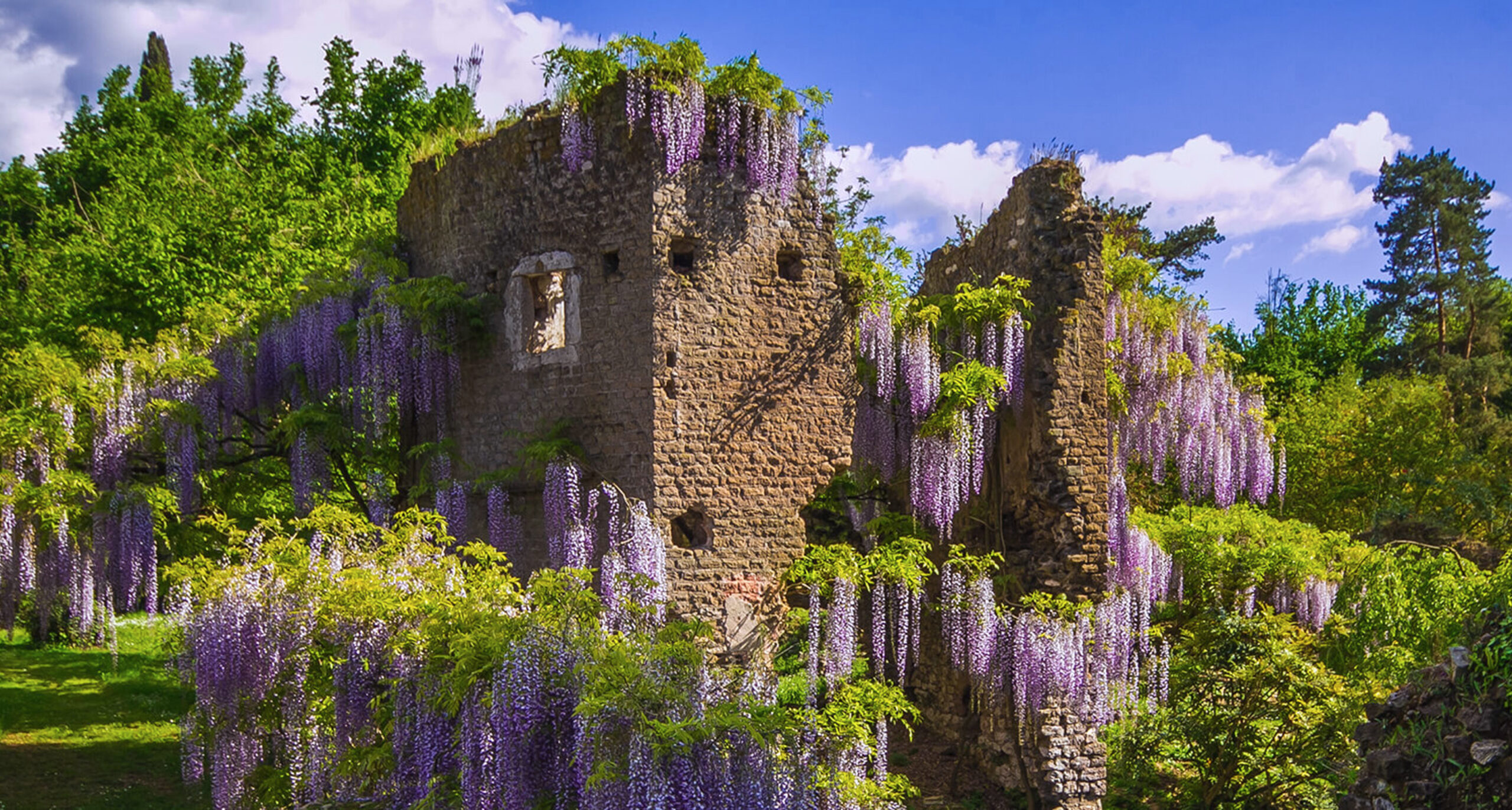The region of Lazio is most well-known for the Eternal City – Rome. To the south and along the coast of the Tyrrhenian Sea is the historically-rich Province of Latina. It is the smallest in the region and borders the Province of Frosinone to the east, Roma to the north and the region of Campania to the south.
The southern and northeast portions of the province are characterized by a series of hills, leading inland to the Aurunci, Ausoni and Lepini Mountain ranges. The highest peak, at just over 5,000 feet is Monte Petrella. The entire province is dotted with small medieval settlements known as borghi, where traditionally farming and the raising of cattle were the staple occupations. The remainder of the terrain occupies a plain known as the Agro Pontino, which extends down to the Tyrrhenian Sea. Originally, much of the land was mosquito-infested marshland, but during 1930s, the marshes were dried and new towns and villages were built.
The provincial capital, Latina was founded by Benito Mussolini in 1932 as Littoria. The city was populated with settlers primarily from Friuli and Veneto. It was renamed Latina in 1946. The city is built on an octagonal plan with the main square, Piazza del Popolo, in the center, with straight roads radiating outward. As a relatively new city, there is little of the historical interest that abounds elsewhere in the province, although the city center itself is pleasant and the surrounding countryside is beautiful. In the city is Torre Pontina, completed in 2010 and is the 10th tallest building in Italy. At 419 feet, it is the tallest in the Lazio region.
Not far from the city you can find the stunning Garden of Ninfa which has been described as the most romantic garden in the world. It covers an area of 260 acres, of which 20 are beautifully landscaped. It is an Italian National Monument and is open to the public at set times, between April and November.
To the north of Latina is the walled town of Cori, known for both the production of red and white DOC wines and also for its archeological and historic sites. These include the Temple of Hercules; Santa Maria della Pietà, originally built in the Romanesque style, but was rebuilt in the 17th century; the 15th century Church of Santa Oliva, built over the top of an ancient Roman temple and Ponte delle Catena, an ancient Roman ‘chain’ bridge.
Nearby is the town of Castellone, where visitors encounter one of the largest Roman cisterns in the world, dating back to the 1st century BC. Also of interest is the Church of San Luca, which dates from the 15th century and in recent years has had frescoes of Episodes of the New Testament and Madonna del Latte discovered within its walls.
To the south of the capital city and located inland is the town of Campodimele. It is built on a steep Karstic hill between the Monti Ausoni and Monti Aurunci ranges. Enclosed by its medieval city walls are the Monastery of Sant’Onofrio and the Church of San Michele Arcangelo, both constructed a millennium ago, as well as the 13th century Church of Annunziata. Additionally, Campodimele is famous for the longevity of its residents, where the average life expectancy is 95 years.
Just a few miles due south of Campodimele is Itri, a town split into two section by the River Pontone. Known for its unusual castle, where one tower is square, another is polygonal and the third is nicknamed ‘Coccodrillo’ (Crocodile), Itri is also where most of the production of the famous Gaeta olive takes place.
Traveling along the coast, it seems that every small town has something to offer. Picturesque Gaeta has three principal attractions – its setting, its history and its beaches. Gaeta was a summer destination for the wealthy residents of ancient Rome. Situated on a promontory, it has a curving waterfront and harbor that look out over a large bay. Its historic town center is clustered on the slopes behind, dominated by a large fortress. At the back of the town center, occupying the rest of the promontory, is Monte Orlando, crowned with a lighthouse and a well-preserved Roman mausoleum. There is a genuine nautical feel to Gaeta. It is not only an active commercial and tourist port, it is home to the U.S. Navy’s Sixth Fleet.
Nearby is the town of Fondi, which runs inland to the coast and contains part of a nine mile-long sandy beach, stretching from the resort towns of Sperlonga to Terracina. The symbol of Fondi is its castle, which has a round tower that reaches over 100 feet in height. It was built during the 14th century along part of the town’s ancient Roman walls.
Formia is another lovely coastal resort and like Gaeta, was extremely popular during the Roman Imperial Age. It is famous for its mausoleum which has been identified as the Tomb of Cicero. It measures 274 feet by 224 feet and has a tower almost 80 feet in height.
Continuing down the coast, the small town of Minturno contains several interesting sites to visit. Its Roman ruins consist of an amphitheatre, an aqueduct, a statue from the late Empire Age and a theatre constructed in opus reticulatum – a form of brickwork used in ancient Roman architecture consisting of diamond-shaped bricks of tufa. From the medieval era is the Baronial Castle built in the 9th century and the Church of St. Francis built in 1360. The town also contains the Romanesque-style Church of St. Peter, built during the 11th and 12th centuries with distinctive wide entrance stairs and four arcades added in the 14th century. The Thermae of Suio are located a few miles outside the city and the thermal springs have been used since ancient times.
In the town of Priverno, the sights include the Cathedral of Santa Maria Assunta, consecrated by Pope Lucias II in 1183 and San Benedetto, built by Benedictine monks in the 7th century. It contains frescoes that date from the 13th to 16th centuries. The Church of San Giovanni Evangelista, originally from the 9th century, was rebuilt in the 13th century and also contains significant frescoes, including the 14th century story of St. Catherine and the 15th century Madonna with Child. In the town, you will also find the Abbey of Fossanova, where the town’s patron saint, St. Thomas Aquinas, died on March 7, 1274.
Terracina, although a modern town, was built on the site that dates back to the Roman Age. The main piazza is situated on what was originally a Roman forum, with paving slabs and inscriptions that are still well-preserved. There are some wonderful medieval buildings in Terracina, such as the Cathedral of Saints Pietro and Cesareo, originally consecrated in 1074. The vestibule is approached by way of a long staircase supported by ten ancient columns, resting on carved lions. Next to the cathedral is the Gothic-style Palazzo Venditti, constructed during the first half of the 14th century. Wherever one travels in Latina, the monumental history of Italy, from the Roman Empire through the medieval-era and even into the 20th century is on full display.





